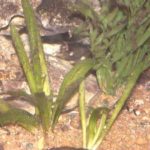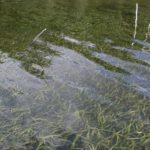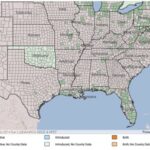Vallisneria americana
Illustration courtesy of University of Florida/IFAS Center for Aquatic and Invasive Plants. Used with permission.
What is Eel Grass?
Physical Characteristics
Leaves:
- Clustered at base
- Straight
- Thin, ribbon-like
- Entirely submerged or with upper part floating
- About 2 feet long & 0.78 inches wide
Flowers:
- Numerous
- Crowded on short pedunculate surface
- Some floating on the water
Fruit:
- Cylinder-shaped
- Does not split to release seed
- 3.16-7.09 inches long
Roots:
- Stringy
- Fleshy buds
Eel grass, tapegrass, or wild celery are all common names for Vallisneria.
Where Does it Grow?
USDA, NRCS. The PLANTS Database (http://plants.usda.gov,). National Plant Data Team, Greensboro, NC 27401-4901 USA.
Eel grass can be found in lakes and beds of flowing streams.
Pros and Cons of Eel grass
Eel grass seeds, roots and leaves are consumed by ducks and other waterfowl; while its dense underwater structures provides an excellent habitats for invertebrates and fish. Submerged portions of all aquatic plants provide habitats for many micro and macro invertebrates. These invertebrates in turn are used as food by fish and other wildlife species (e.g. amphibians, reptiles, ducks, etc.). After aquatic plants die, their decomposition by bacteria and fungi provides food (called “detritus”) for many aquatic invertebrates.








